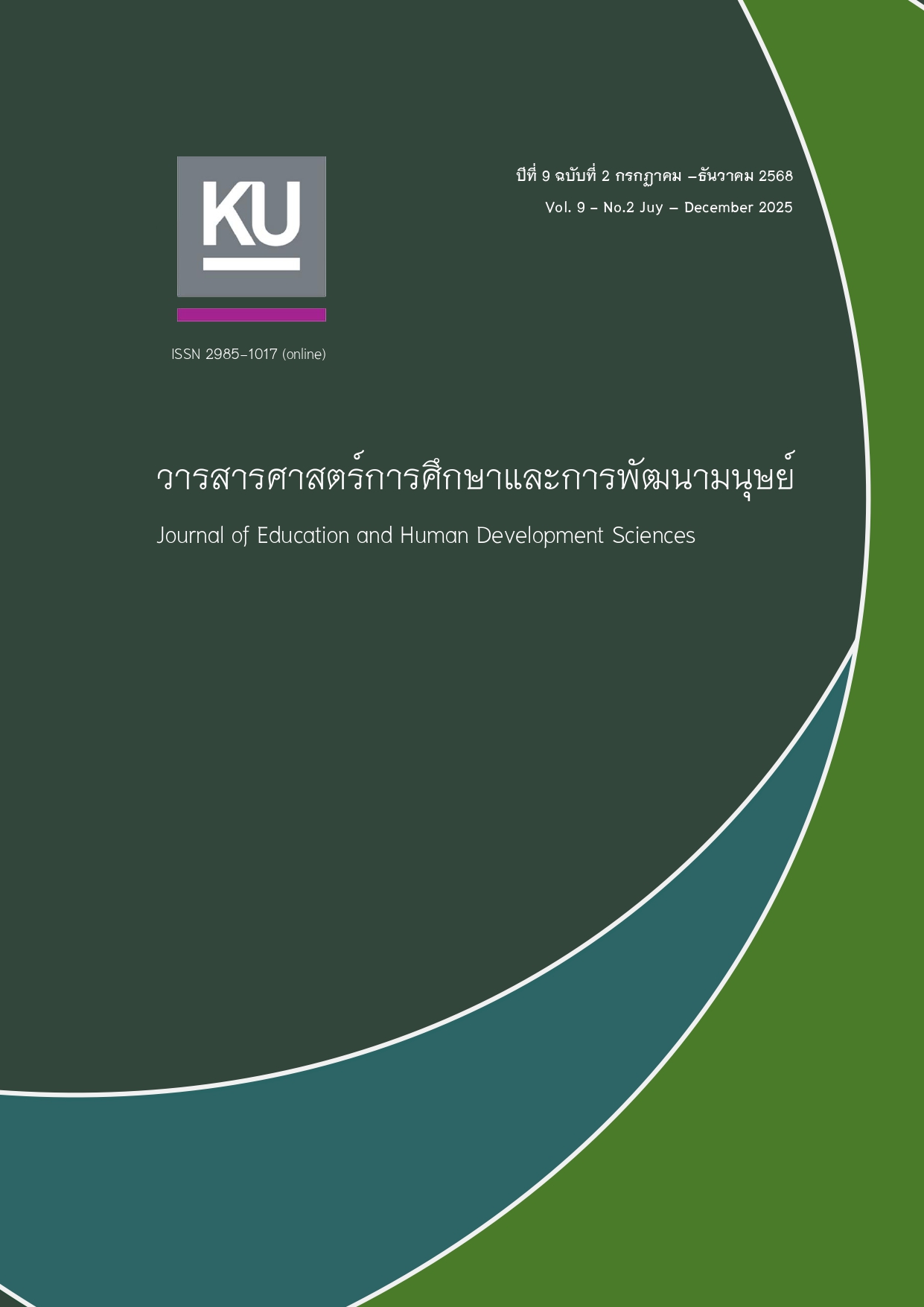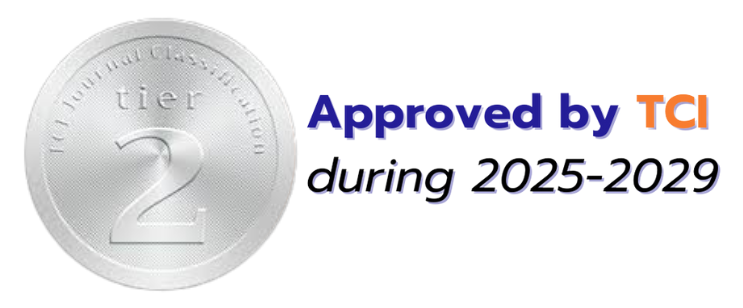Factors Affecting Bullying Behavior of Junior High School Students at Kasetsart University Laboratory School Kamphaeng Saen Campus Educational Research and Development Center
Keywords:
Bullying behavior, Junior high school studentsAbstract
The objectives of this research were 1) to study the level of bullying behavior among lower secondary school students, 2) to investigate the factors that affect bullying behavior among lower secondary school students, and 3) to identify the factors that influence bullying behavior among lower secondary school students. The sample consists of 240 lower secondary school students selected through simple random sampling. Data were collected using questionnaires, and the statistics used for data analysis include frequency, percentage, mean, standard deviation, person’s product moment correlation coefficient, and stepwise multiple regression analysis.
The research results were as follow: 1) the overall factors influencing bullying behavior among lower secondary school was at a high level; 2) the factor affecting of bullying behavior among lower secondary school students was at moderate level with 7 factors identified include self-esteem, frustration, relationships between students and peers, relationships between students and family, relationships between students and teachers, online media usage, and religious beliefs; and 3) the factors affecting bullying behavior among lower secondary school students consist of 3 factors: relationships between students and peers, relationships between students and family, and online media usage. The collectively explain the bullying behavior of lower secondary school students about percentage of 21.2 at the level of .001 and can be used to develop a predictive equation. The predictive equation for bullying behavior of lower secondary school students as follows: Regression equation: Y ̂=2.455 + 0.168X_3 + 0.316X_4 + 0.161X_6 Standardized regression equation: (Z_y ) ̂=0.185Y_x3 + 0.331Y_x4 + 0.215Y_x6
Downloads
References
Arayawinyu, P. (1999). Education for children with special needs (2nd ed). Waen Kaew Publishing.
Atsakun, S. (2010). Family Institution: Development and Change. Chulalongkorn University Press.
Chanrod, A. (2022). A study of the severity of bullying behavior among students in Secondary Schools of Mueang District in Phitsanulok Province. Journal of Local Management and Development, Pibulsongkram Rajabhat University, 2(1), 43-56.
Faculty of Mass Communication, Ramkhamhaeng University. (2020). The Department of Mental Health reveals that Thai children are ranked 2nd in the world for bullying in schools. https://mac.ru.ac.th/ramintouch.
Damrongkiattisak, W., Achapetch, N. & Chamnankha, D. (2014). Learning achievement between using of print media and interactive multimedia of primary and secondary school students. Journal of Humanities and Social Sciences, 22(38), 135-160.
Department of Mental Health, Ministry of Public Health. (2019). Stop bullying, stop violence in society. https://dmh.moph.go.th/news-dmh/view.asp?id=30024.
Kaewwiset, P., Matayaboon, N., Somboon, L. & Kodyee, S. (2021). Cyber bullying behavioral and related factors of high school students in Muang District, Chiang Rai Province. Journal of Buddhist Social Sciences and Anthropology, 6(5), 239-253.
Kitsukchit, P. (2016). The factors causing adolescent female bullies in secondary girls’ schools in the Nangkok Metropolis According to Ronaid L. Akers’s Social Learning Theory. Journal of Library Services, Prince of Songkla University, 27(1), 72-80. DOI: http://dx.doi.org/10.14456/asj-psu.2016.8
Laeheem, K. & Sangkharat, U. (2013). Guidelines for solving bullying behavior problems of students in private Islamic schools in Songkhla Province. Faculty of Liberal Arts, Prince of Songkhla University, Hat Yai Campus.
Laeheem, K. (2014). Factors related to students: Bullying behavior of students in Islamic private schools, Songkhla Province. Srinakharinwirot Journal of Humanities and Social Sciences, 6(12) , 14-30.
Sittichai, R. & Tudkeo, T. (2017). Cyberbullying behavior among youth in the three southern border provinces. Journal of Library Services, Prince of Songkhla University, 28(1), 86-99.
Wutthisawat, S. (2009). A study of family relationships among students in grade 2 (Master's thesis in Guidance Psychology, Srinakharinwirot University).
Wibulseth, S. (1999). Relationships among Thai family members. Journal of Demography, 15(1), 37-50. https://doi.org/10.56808/2730-3934.1199
Downloads
Published
Issue
Section
License
Copyright (c) 2025 วารสารศาสตร์การศึกษาและการพัฒนามนุษย์

This work is licensed under a Creative Commons Attribution-NonCommercial-NoDerivatives 4.0 International License.







